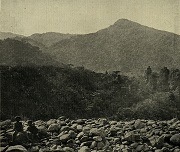|
Advertising is the means by which advertisers promote activities, market products and disseminate information to the target audience using mass communication tools. In the past when information distribution channels were limited, advertising in newspapers was the most crucial way of doing publicity. For newspapers, advertisements are also the main source of income. In 1932 when The Taiwan Shinminpo became a daily, the department of advertising was set up under the business bureau. The fee for placing advertisements was posted on the front page. It was repeatedly recorded in Lin Xian-tang’s diaries between 1932 and 1934 that the newspaper’s income could not cover the expenditure. Hence, soliciting advertisements from local and abroad became critical for sustaining the operation. The plethora of advertisements placed in the newspaper involved pharmaceuticals, cosmetics, nutritional supplements, seasonings, alcohol and other daily necessities. Many well-known Japanese brands had entered the Taiwan market during early Japanese colonial rule, such as Shiseido, Wakamoto and ROHTO. (Figure 21). Other contents included promotional ads on movies, books, comics, insurance, hospitals, lawyers, school admissions, machinery and equipment, even obituaries and funeral notices. In addition to being many and diverse, the advertisements had ingenuous design featuring exquisite hand-drawn illustrations matched with eye-catching slogans to convey the message to readers within the limited space.
Figure 21 In November 1933, The Taiwan Shinminpo released a full-page Chinese advertisement placed by RHOTO to promote the convenience of using its ‘eye water’ (eye drops). On it were simple explanation in English and hand-drawn illustrations of the new bottle design as well as how and when to use the medication. The ad copies “A Cure-all of Modern Ophthalmology”, "100% Effective", and "The Perfect Prescription" were really exaggerating the curative effects. Source: The Taiwan Shinminpo No. 979 (1933-11-10), Records of the Taiwan Shinminpo (T1119_02_023_0010).
To effectively achieve the purpose of advertising, kana was added to the ad copies for easy reading and better understanding. Sales were also promoted through discounts or special offers and placement marketing. For example, advertisements on health food, medicine, and cosmetics would have copies presented as new medical or beauty knowledge, with the product name mentioned at the end of the text or the corner of the ad. (Figure 22) In contrast, some advertisements had no special design, showing only the name of an individual or business, suggesting that they might be ads actively solicited by the newspaper. Figure 22 Placement marketing is a marketing technique where references to specific brands or products are incorporated into another work, such as a film or television program, with specific promotional intent. The product shown is not necessarily related to the media it was shown and such marketing technique may go unnoticed by the readers/audience. In The Taiwan Shinminpo, product placement was frequently seen, especially for pharmaceuticals or cosmetics. For example, on January 30, 1938, the Family page carried at the bottom a lengthy report that seemed to be providing new beauty knowledge, advocating face-washing for better and spotless skin while taking a bath when pores on the skin were open. In fact, the report’s hidden agenda was to promote a facial cleanser with users’ experience weaved into the text and product information provided at the end. Source: The Taiwan Shinminpo No. 2509 (1938-01-30), Records of the Taiwan Shinminpo (T1119_02_073_0029).
Of note is that after 1938, the ad copies often echoed current events and national policies, such as congratulating the Japanese army on its victory in the war, taking healthy diets to serve the country, improving one’s physique, or emphasizing the product being selected by government agencies. Moreover, many new products advertised were developed in response to the prevailing situations, such as kimonos in khaji, a color often used for military uniform, items for redecorating the main hall of households (national flag of Japan, flag stand, ceremonial equipment), books (War History of Great Japan and Dairy from Battle Front) and Chinese dictionary. From today’s perspective, these advertisements of the Japanese colonial era not only showed the diversity of business models at that time but also gave us a sense of modernization and modernity experienced by Taiwan in those days. (Figure 23)
Figure 23 This advertisement placed in The Taiwan Shinminpo in July 1940 showed pharmaceuticals for chronic gastrointestinal diseases that were given names with military connotations of ‘conquest’ and ‘victory’. The LION toothpaste ad at the page bottom had fine hand-drawn illustrations with the ad copy highlighting it as an economical and affordable choice produced with the highest technology available during wartime. Source: The Taiwan Shinminpo No. 3395 (1940-07-10), Records of the Taiwan Shinminpo (T1119_02_103_0010). |
 |






